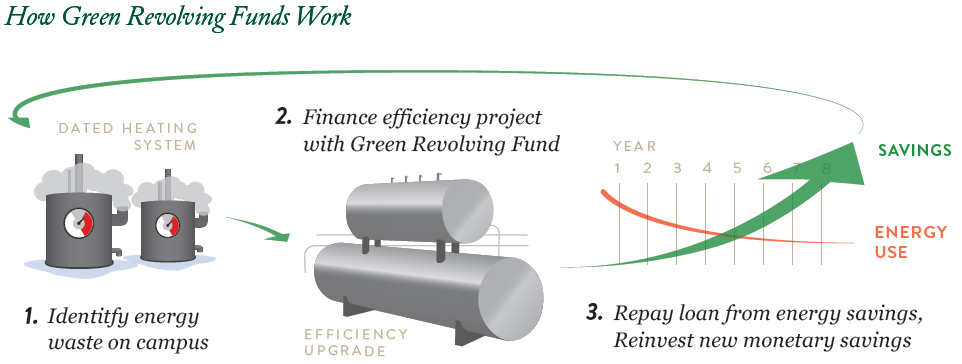Green revolving funds (GRFs) are a sustainability financing tool that invests money in projects to improve efficiency and decrease resource use, thereby reducing both operating expenses and greenhouse gas emissions. The cost savings that result from these efficiency projects are revolved back to the GRF, allowing it to return to its original size or even to grow. For the majority of fund models, after the initial project costs have been returned to the fund, additional savings accrue to the school or a specific department’s operating budget.
Having a GRF ensures that an institution will always be able to finance sustainability projects, which will ultimately save the institution money through reduced operating costs. If an institution has already dedicated money to sustainability efforts on its campus, using that money to create a GRF would capture the cost savings from the projects it finances and create a continuous cycle for funding (instead of a one-time funding allocation for individual projects). By tracking and reclaiming the project savings, GRFs continue to be available as a method of funding for an unlimited number of efficiency projects and sustainability work.
You can learn more about GRFs at www.greenbillion.org

